How to Grow a Thriving Banana Tree
- January 25, 2024
- 0 comment
Discover key tips for growing healthy banana trees – ideal soil, sunlight, watering, and care essentials. Growing a thriving banana tree is a fulfilling endeavor that combines agricultural skill with a touch of tropical flair. Whether you’re an experienced gardener or a curious novice, the journey from planting to harvesting these lush plants is both rewarding and enlightening. This comprehensive guide will walk you through the essential steps of banana tree cultivation, from selecting the right planting site to the moment you harvest your first bunch of bananas.
What is a Banana Plant?

The Banana Plant, known scientifically as Musa, is not a tree in the traditional sense but rather a giant herb with a succulent, tree-like stem. These plants, which can reach up to 25 feet in height, are characterized by their large, elongated leaves that can grow up to 9 feet in length, creating a distinctive, lush green canopy. The “trunk” of a banana tree is actually a pseudostem formed by tightly packed leaf bases. The banana fruit, botanically a berry, develops from a flower cluster, typically in large hanging clusters known as bunches. Each bunch consists of several tiers, called ‘hands’, with multiple bananas or ‘fingers’. These plants are primarily grown in tropical and subtropical regions and are notable for their rapid growth cycle. Bananas are not only a staple food crop in many parts of the world but also a significant export product, contributing to the economy of several countries. There are numerous varieties of banana plants, each with unique qualities, including the widely consumed Cavendish banana and plantain varieties, which are cooked as a vegetable. In addition to their fruit, banana plants have versatile uses; their leaves are often used as natural food wrappers or plates, and fibers extracted from the pseudostem and leaves are used in textiles. The cultivation of banana trees is an intricate process, requiring specific climatic conditions, careful irrigation, and protection from pests and diseases, highlighting the banana tree’s importance in both agriculture and culture across the globe.
| Aspect | Specification |
|---|---|
| Scientific Name | Musa |
| Classification | Herbaceous plant |
| Height | Up to 7.6 meters (25 feet) |
| Leaf Size | Up to 2.7 meters (9 feet) long |
| Trunk | Pseudostem formed by leaf bases |
| Fruit Type | Berry (commonly referred to as a banana) |
| Fruit Appearance | Large hanging clusters (bunches) with tiers (hands), each containing several bananas (fingers) |
| Cultivation Regions | Primarily tropical and subtropical regions |
| Varieties | Includes Cavendish, Plantain, and numerous others |
| Soil Requirements | Well-drained, fertile soil with pH between 5.5 and 7 |
| Water Requirements | Consistent moisture, avoid waterlogging |
| Temperature Range | Optimal daytime temperatures between 26–30ºC (78–86ºF), with night temperatures no lower than 20ºC (67ºF) |
| Harvest Time | Approximately 6-7 months to flower, additional 2-3 months for fruit maturation |
| Uses | Fruit consumption leaves for wrapping and plating food, fibers for textiles |
Preparing for Planting
1. Selecting a Planting Site

Assess Climate Conditions
Research your area’s temperature and humidity. It’s essential to maintain a humidity level of at least 50%, as constant as possible. The ideal daytime temperatures for banana plants are between 26–30ºC (78–86ºF), with night temperatures not dropping below 20ºC (67ºF). The temperature range should stay mostly within these bounds, rarely going below 14ºC (57ºF) or above 34ºC (93ºF). Understand that bananas can take up to a year to produce fruit, so it’s important to consider the range of temperatures the plant will experience throughout the year. Note that if the temperature falls below 14ºC (57ºF), banana plants will stop growing, and they are at risk of dying in frost conditions (<0ºC or <30ºF).
2. Optimal Sunlight Exposure
Identify the sunniest area in your yard for planting. Banana plants require around 12 hours of direct, bright sunlight daily to grow optimally. They can still grow with less sunlight, but the growth rate will be slower. It’s crucial to evaluate the areas in your yard to determine where receives the most sun exposure.

3. Soil Drainage
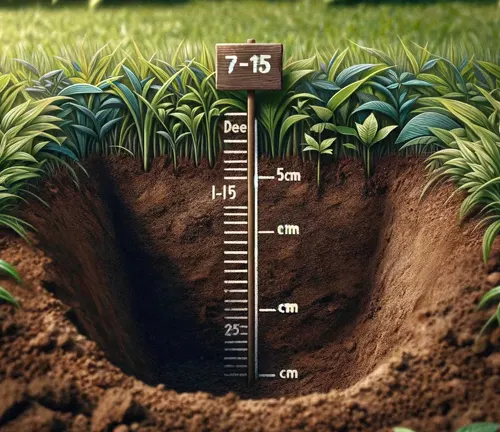
Select an area with good drainage. While banana plants need plenty of water, they are prone to rot in overly wet conditions. To check soil drainage, dig a hole 0.3m (1 ft.) deep, fill it with water, and then let it drain. Refill the hole and measure the remaining water after 1 hour. Ideal drainage for banana plants is approximately 7-15 cm per hour. Improve drainage by constructing a raised garden bed or adding 20% perlite to the soil. This is especially crucial for banana plants that are young or without leaves, as leaves assist in evaporating excess water.
4. Space Requirements
Ensure that you allow sufficient space for the banana plant to grow. Despite being technically herbs, banana plants can grow to tree-like sizes. Some varieties and individuals can reach up to 7.6 m (25 ft.) in height. It’s advisable to research the specific needs for your locale and variety. Each banana plant will need a hole at least 30 cm (1 ft.) wide and 30 cm (1 ft.) deep. In windy areas, larger holes may be necessary, requiring more soil. Keep banana plants at least 4.5 m (15 ft) from large trees and shrubs to avoid competition for water. Planting multiple banana plants together at the right distance can help maintain beneficial humidity and temperature levels. Aim to plant them in a clump with 2–3 m (6.5–10 ft.) between each, or if planting many, space them 3–5 m (10–16 ft.) apart. For smaller spaces, dwarf varieties are an option as they require less room.
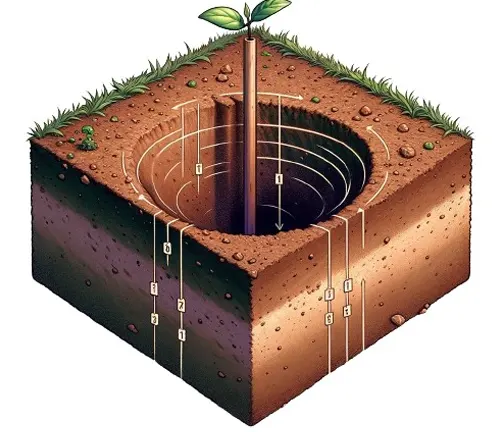
5. Indoor Growing Considerations
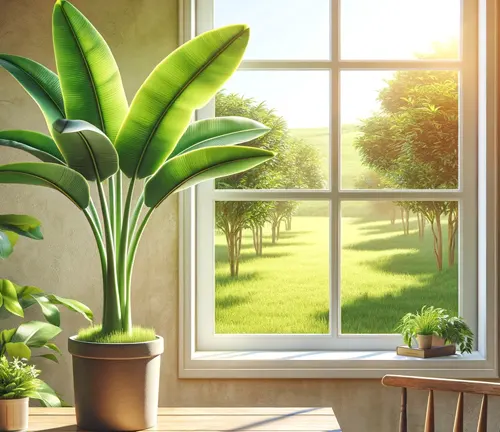
If your outdoor environment isn’t suitable, consider growing your banana plant indoors. You’ll need a location that can provide similar conditions as outdoors, specifically 12 hours of bright light and consistent warm temperature and humidity. Choose a large planting container that can accommodate the plant’s adult size, or be ready to transplant it into a larger pot when necessary. Always use a pot with a drainage hole placed in a location where water can drain effectively. Dwarf varieties are ideal for limited indoor spaces. When growing indoors, use half the usual amount of fertilizer or stop fertilizing altogether if you lack the space for a larger plant, particularly if you’re growing it as a non-fruiting houseplant.
Planting the Banana Plant
1. Selecting Planting Material
Choose your planting material carefully. You can obtain a banana sucker, which is a small shoot from the base of a banana plant, from another grower, a plant nursery, or even purchase one online. Another option is a banana rhizome or corm, the base from which suckers grow. Tissue cultures, produced in laboratories, are another alternative, often used for higher fruit yield. For transplanting a mature plant, prepare a hole that matches its size. Optimal suckers are typically 1.8-2.1m (6–7ft) in height with thin, sword-shaped leaves. If a sucker is still attached to the mother plant, remove it by cutting downward with a clean shovel, ensuring you include a portion of the corm and its roots. If you have a rhizome without significant suckers, it can be divided into pieces, each with a bud, to grow new plants, though this process is slower than using a sucker.
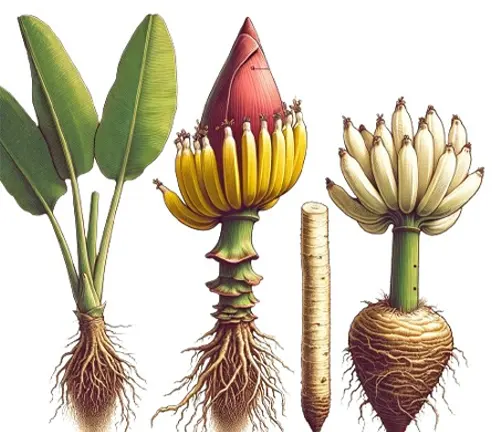
2. Trimming the Plant

Before planting, inspect and trim the plant. Remove any parts that are dead, damaged by insects, rotting, or discolored. If you are using a sucker, trim the roots to a few centimeters (1–2 inches) to reduce disease risk. Also, consider removing any excess leaves (more than five) and make a slanting cut at the top of the plant to enhance sunlight exposure to the soil, aiding root growth and preventing rot.
3. Preparing the Planting Site
Clear the chosen planting site of any existing plants or weeds. Dig a hole for each banana plant, approximately 30cm wide and 30cm deep (1ft. x 1ft.). A larger hole can provide more support for the plant but will require more soil. For indoor planting, use a pot of at least this size or larger.
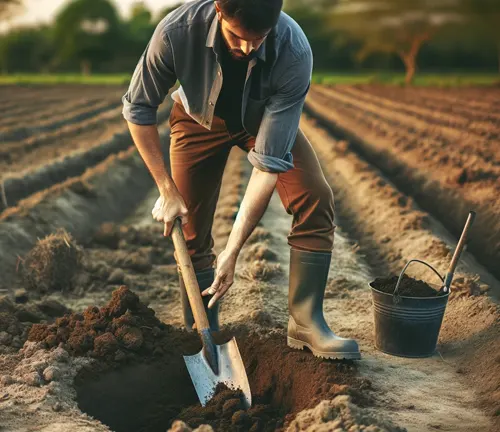
4. Soil Preparation
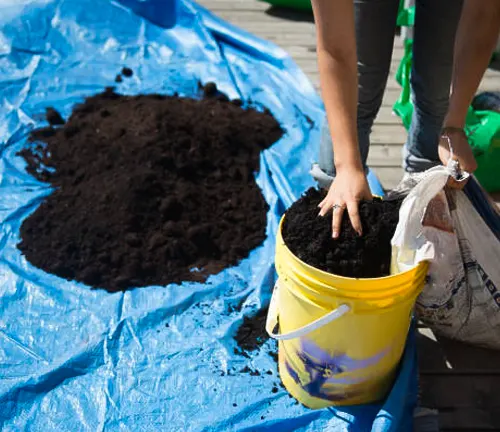
Fill the hole mostly with loose, rich soil, leaving some space at the top for drainage. Avoid using regular potting or garden soil unless you’re certain of its suitability. Soil mixes designed for cacti can be effective. The ideal soil for banana plants has a pH between 5.5 and 7; soil with a pH of 7.5 or higher can be harmful.
5. Planting
Place the banana plant upright in the prepared soil, ensuring the leaves point upwards. The soil should cover the plant’s roots and approximately 1.5–2.5cm (0.5–1 inches) of the base. Tamp down the soil around the plant to secure it, but avoid packing it too tightly.
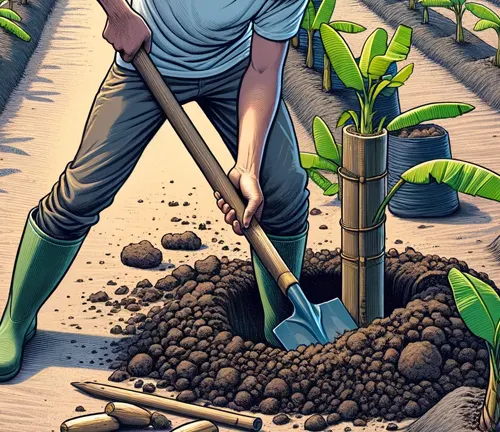
Caring for Your Plant
Fertilization
Proper fertilization is crucial for the health and productivity of your banana plant. Banana plants require regular feeding with a fertilizer high in potassium, often referred to as potash. Young plants typically need about 0.1–0.2kg (0.25–0.5lbs) of fertilizer each month, with the amount gradually increasing to 0.7–0.9kg (1.5–2 lbs) for an adult plant. Apply the fertilizer in an even ring around the plant, avoiding direct contact with the stem to prevent burn. It’s important to skip fertilization if temperatures drop below 14ºC (57ºF) or if the plant hasn’t shown any growth since the last application. Over-fertilizing can be just as harmful as under-fertilizing, so adhering to recommended amounts is key.
Watering
Banana plants have high water needs, but it’s essential to balance this with proper drainage to avoid root rot. The soil should be kept consistently moist. In warm growing conditions without rain, daily watering might be necessary, especially if the top 1.5–3 cm (0.5–1 in.) of soil is dry. However, it’s crucial to avoid overwatering. If the plant is sitting in water for extended periods, reduce the amount of water per session. During cooler temperatures when the plant is not actively growing, reduce the frequency of watering to once every week or two. Always check the soil moisture before watering.
Mulching
Mulching is an effective way to maintain soil moisture and temperature, reduce weed growth, and add organic matter back into the soil. Use organic mulch, such as chopped-up dead leaves or banana plants, around the base of your banana plant. This not only helps to retain moisture but also gradually enriches the soil as the mulch decomposes. Regularly check and replenish the mulch to maintain an adequate layer, and keep an eye out for and remove any weeds that might compete with the banana plant for nutrients and water.
Pest and Disease Control
Vigilance is key in managing pests and diseases that can affect banana plants. Common pests include banana aphids, mealybugs, and weevils, while diseases like Panama disease and Black Sigatoka can be detrimental. Regularly inspect your plant for signs of infestation or illness, such as discolored leaves, stunted growth, or visible pests. Early detection is crucial for effective control. Utilize appropriate organic or chemical treatments as needed, but always follow the manufacturer’s guidelines to avoid harming the plant.
Pruning and Cleaning
Pruning is an essential aspect of banana plant care. Remove any dead or damaged leaves to encourage new growth and improve air circulation. This not only makes the plant look more aesthetically pleasing but also helps in preventing disease and pest infestation. Cleaning the leaves can also be beneficial, especially for indoor banana plants. Dust on leaves can block sunlight and reduce photosynthesis, so gently wiping the leaves with a damp cloth can improve the plant’s overall health.
De-suckering
Banana plants naturally produce suckers or shoots, which can draw nutrients away from the main plant. Regularly remove these suckers, leaving only the strongest one (known as the ‘follower’) to replace the main plant after it has fruited. This practice ensures that the plant’s energy is focused on the growth of the main stem and its fruit, leading to a healthier plant and better fruit production.
Overwinter Care
In colder climates, special care is needed to protect banana plants during winter. This can involve covering the stem with soil or blankets, storing the plant indoors in moist sand, or reducing fertilizer applications. For plants severely affected by cold, the viable parts of the corm and suckers can be preserved for later planting.
Nurturing and Harvesting Banana Fruit
- Monitoring Flowering The flowering of a banana plant is a significant milestone in its fruiting process. Typically, a banana plant will flower approximately 6-7 months after planting if grown in optimal conditions. The emergence of a purple flower is the first indicator of the fruiting phase. It’s crucial to never remove the leaves around the flower, as they provide essential protection from the sun and other environmental factors. Observing the plant’s flowering not only gives you an idea of when to expect fruit but also helps in identifying any potential issues early on, such as inadequate nutrition or water.
- Fruit Development Following the flowering stage, the development of the fruit begins. This phase can take an additional 2-3 months. The bananas develop in clusters known as ‘hands,’ and each individual banana is referred to as a ‘finger.’ The entire stem, containing several hands, is called a bunch. During this period, it’s important to ensure the plant continues to receive adequate water and nutrients. The plant’s energy is now primarily focused on fruit development, so maintaining optimal growing conditions is key to achieving a healthy and bountiful harvest.
- Harvesting Bananas Determining the right time to harvest bananas is critical. Typically, the fruit is ready for harvest when the flowers or the plant itself begin to die back. Another sign is the drying out of the small flower at the tip of each banana. When these signs are evident, carefully notch the stem on the side opposite the bunch and gently let the tree bend to cut off the bunch. It’s important to harvest the fruit carefully to prevent damage. Once harvested, bananas ripen quickly, so it’s advisable to harvest them in stages if you have a large number.
- Post-Harvest Plant Care After harvesting the fruit, the care for the banana plant continues. Cut the stem of the tree halfway to encourage new growth. It’s also the time to desucker the base, leaving only one sucker to replace the mother plant. This post-harvest care is essential as it prepares the plant for the next cycle of growth and fruiting. Properly disposing of the cut stem and any remaining plant debris is important to prevent the spread of pests and diseases.
- Ripening of Bananas Once harvested, bananas will continue to ripen. The ripening process is often quicker than many expect, so it’s important to monitor the bananas closely. If you wish to slow down the ripening process, keep them in a cool, shaded area. For a faster ripening process, place them in a warm area or in a paper bag to concentrate the ethylene gas that bananas naturally emit, which speeds up ripening.
Benefits of Banana Plants
- Nutritional Value of Bananas Bananas are a powerhouse of nutrients, making them a highly beneficial aspect of the plant. They are rich in vitamins, particularly Vitamin C and Vitamin B6, and are an excellent source of dietary fiber. Bananas also provide significant amounts of potassium, which is essential for heart health and blood pressure regulation. Moreover, they contain antioxidants and are low in calories, making them a healthy snack choice. The ease of incorporating bananas into various diets, from raw consumption to being a part of desserts and smoothies, adds to their appeal as a nutritional fruit.
- Environmental Benefits Banana plants contribute positively to the environment in several ways. They act as excellent soil stabilizers due to their dense root systems, which is particularly beneficial in preventing soil erosion in tropical regions. Additionally, the large leaves of the banana plant provide substantial shade, creating a microclimate that can support the growth of other sensitive plants and contribute to biodiversity. The plants also play a role in carbon sequestration, helping in the reduction of atmospheric carbon dioxide levels.
- Economic Value On an economic front, banana plants hold significant value. They are one of the most widely consumed fruits in the world, making them a crucial crop for both local and global economies. In many tropical countries, bananas are not only a staple food but also an important export product, contributing to the livelihoods of millions of farmers and workers in the agricultural sector. The versatility of bananas, ranging from fresh fruit to processed products like chips and flour, further enhances their economic value.
- Medicinal Uses Banana plants have various medicinal uses, attributed to both the fruit and other parts of the plant. Bananas are known to aid digestion and help in treating gastrointestinal issues due to their high fiber content. The peels have antimicrobial properties and have been used in traditional medicine. Additionally, the high potassium content in bananas makes them ideal for cardiovascular health. Beyond the fruit, the flower of the banana plant is used in many cultures for its potential health benefits, including improving insulin sensitivity and reducing free radicals.
- Cultural and Traditional Significance Beyond their nutritional and economic value, banana plants hold cultural and traditional significance in many societies. They are often associated with cultural practices and religious ceremonies. In some cultures, banana leaves are used as decorative elements or as eco-friendly plates and food wrappers, showcasing the plant’s versatility. The plant’s significance in various cultural rituals and traditions adds an intangible value to its overall benefits.
- Sustainability Aspect Banana plants can be a sustainable crop choice due to their perennial nature. Once established, they can produce fruit for several years with proper care. The plant’s ability to propagate easily through suckers ensures a continuous supply without the need for replanting annually, reducing land use pressure. Additionally, various parts of the banana plant, such as the pseudostem and leaves, can be used for making fiber and other by-products, minimizing waste and promoting a sustainable approach to agriculture.
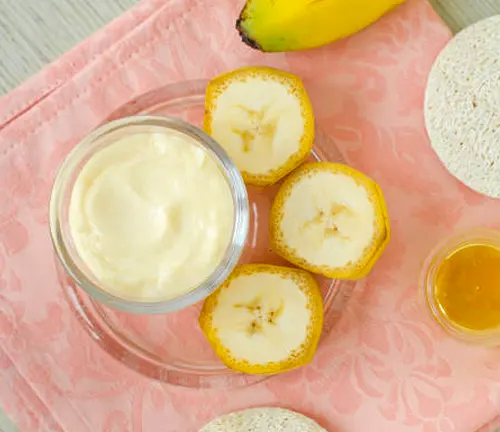
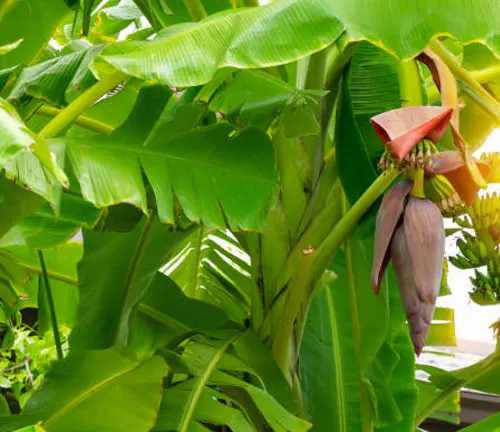
Conclusion
In essence, the art of growing a thriving banana tree is a fulfilling blend of knowledge, dedication, and patience. It demands meticulous attention to climate suitability, soil conditions, and plant care, but the rewards are bountiful. From the satisfaction of nurturing a plant from its infancy to the delight of harvesting your own bananas, the process is as enriching as it is rewarding. This endeavor not only yields delicious fruits but also imparts a deeper appreciation for nature’s cycles and the joy of gardening. Embrace the journey, and you’ll find that each banana harvested is a sweet testament to your gardening prowess.
FAQs
- What are the best conditions for growing a banana tree?
Banana trees thrive in warm, humid environments. They require temperatures between 26–30ºC (78–86ºF) during the day and not below 20ºC (67ºF) at night. They need around 12 hours of direct sunlight daily and well-drained soil. - How often should I water my banana tree?
Banana trees need consistent moisture. Water them deeply once a day during warm weather, ensuring the soil stays moist but not waterlogged. In cooler weather, reduce watering to once every few days, depending on soil moisture. - What type of fertilizer is best for banana trees?
A high-potassium fertilizer is ideal for banana trees. Young plants require lighter, more frequent feeding, while mature trees need heavier, less frequent applications. Always avoid direct contact of fertilizer with the stem. - How do I protect my banana tree from pests?
Regularly inspect your banana tree for signs of pests. Use organic pest control methods like neem oil for mild infestations. For severe problems, consult with a local gardening expert for appropriate treatments. - When is the right time to harvest bananas?
Bananas are usually ready to harvest when the flower at the end of the fruit bunch dries and falls off, and the bananas turn slightly yellow. The exact timing can vary based on the variety. - Can I grow a banana tree indoors?
Yes, banana trees can be grown indoors if they have enough light and space. Dwarf varieties are best for indoor cultivation. Ensure the pot has good drainage and adjust water and fertilizer quantities accordingly. - How do I propagate a banana tree?
Banana trees can be propagated using suckers, which are shoots that grow from the base of the plant. Choose a healthy sucker and cut it away from the main plant, ensuring it has some roots attached, and then replant it. - Do banana trees require pruning?
Yes, pruning is necessary for the health of your banana tree. Remove dead or damaged leaves and any suckers you don’t want to grow into new plants. This helps to focus the plant’s energy on the main stem and fruit production.
In summary, growing a thriving banana tree is a journey that blends the joys of gardening with the delight of harvesting your own fruit. By providing the right conditions, regular care, and a little patience, you can transform a simple banana sucker into a lush, fruit-bearing tree. Whether in your backyard or indoors, the experience of nurturing these tropical plants is both rewarding and enriching, offering not just a bounty of bananas but also a deeper connection with nature. Happy gardening!

Benjamin Brooks
Forestry AuthorGreetings! I'm Benjamin Brooks, and my journey over the past 15 years has revolved around the fascinating realms of content creation, expertise in snow clearing, and the intricate world of lumberjacking and landscaping. What began as a simple curiosity about the natural world and heavy machinery has evolved into a passionate profession where my love for crafting words intertwines seamlessly with my lumberjacking and garden skills.



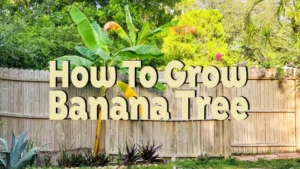
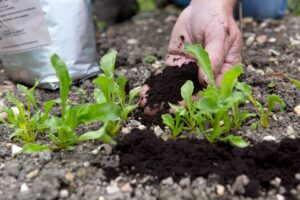

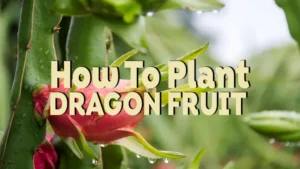

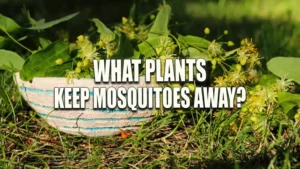

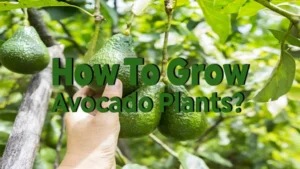


Leave your comment